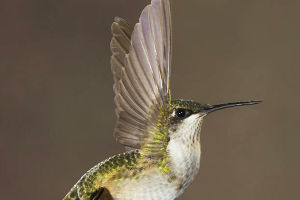The leopard, a feline species, thrives in temperate, savannah, or semi-desert environments. Known for their lean, muscular build, long-legged stature, and remarkable athleticism and agility, they embody grace and power.
In contrast, cheetahs, with their inherent long legs, demonstrate unmatched speed, reaching astonishing velocities.
While the cheetahs gracing the savannah are undeniably magnificent creatures, they also face significant vulnerability. Habitat loss, dwindling prey numbers, and illicit human poaching have all contributed to their perilous status, leading to their classification on the IUCN Red List and placing them on the brink of extinction.
However, for those unfamiliar with cheetahs, here are six distinguishing characteristics to note:
1. Distinctive "tear tracks":
Cheetahs possess strikingly large eyes accented by two prominent black "tear tracks" running down from the corners. This feature is unique to cheetahs and serves as a clear visual identifier, setting them apart from other feline species.
2. Unrivaled acceleration:
With their streamlined body shape and specialized musculature, cheetahs can achieve astounding acceleration, reaching speeds of nearly 100 km/h (62 mph) in just three seconds. As the fastest land animal, cheetahs' acceleration prowess surpasses even that of many high-performance sports cars, earning them the title of acceleration king.
3. Stealthy hunting tactics:
Despite their size, cheetahs employ surprisingly stealthy hunting techniques. They carefully select their prey through visual scanning, patiently tracking their movements until seizing the opportune moment to strike. With lightning-fast agility, cheetahs swiftly pounce on their target, delivering a fatal blow by clamping down on the prey's throat.
4. Diurnal Hunters:
Despite being smaller in size compared to other large carnivores like lions and tigers, cheetahs have evolved unique strategies to thrive. Many predators in their habitat are diurnal, prompting cheetahs to hunt during the day to minimize encounters with larger predators. This daytime activity helps them avoid confrontations and reduces the risk of injury.
5. Cooperative Hunting:
While adult female cheetahs typically lead solitary lives, they exhibit remarkable maternal care. After giving birth, a female cheetah remains with her cubs for up to two years, nurturing and protecting them. In contrast, male cheetahs form alliances with their siblings upon reaching adulthood. These male coalitions work together, leveraging their strength in numbers to secure prey and ensure survival.
6. Nomadic Nature:
Cheetahs are inherently nomadic creatures, drawn to the vast expanses of sub-Saharan Africa. They roam freely across the savannah and grassland ecosystems, driven by their wanderlust and the pursuit of prey. This nomadic lifestyle allows cheetahs to adapt to changing environmental conditions and explore new territories in search of sustenance.


